What is Copper Wire Scrap and What Are Its Purity Levels?
Copper wire scrap refers to discarded copper wire suitable for recycling and recovery. The copper recycling market identifies various types of copper scrap, including mill berry copper scrap, which is recognized for its high purity level. Mill berry copper scrap consists of clean, unalloyed copper wire stripped of insulation. The critical factor in categorizing copper scrap is its purity level, significantly influencing its value in the recycling market.
Purity levels for copper scrap are typically expressed as a percentage, with the most common grades being 99.9% and 99.99%. A purity level of 99.9% signifies that the copper is almost entirely free from contaminants, making it suitable for most industrial applications. However, copper with a purity of 99.99% represents an even higher standard, often called “electrolytic copper.” This grade is predominantly used in specialized applications that demand superior conductivity and corrosion resistance, such as electrical wiring, electronic components, and high-performance machinery.
The implications of copper purity extend beyond industrial specifications. Higher purity levels usually demand higher prices in the market, reflecting the increased cost of processing and refining the material. Additionally, the recyclability aspect is enhanced with higher-purity copper, as it can be reintroduced into the production cycle with fewer impurities affecting subsequent applications. This not only benefits manufacturers but also promotes a more sustainable recycling environment. Consequently, understanding the distinctions in purity levels is essential for those engaged in the copper recycling sector, enabling informed decisions that optimize both financial and environmental outcomes.
The Process of Sourcing High Purity Mill Berry Copper Scrap
Sourcing high purity mill berry copper scrap entails a systematic approach that begins at the manufacturing stage. During production, copper undergoes casting, rolling, and extrusion processes, which generate scrap. This scrap, particularly from mills, is categorized as mill berry copper due to its purity and clean composition, often exceeding 99.99%. The value of this content attracts various stakeholders in the recycling industry, leading factories to play a pivotal role in the supply chain.
Factories produce copper products and act as initial points for scrap collection. As they generate excess copper, maintaining quality is crucial for ensuring that the sourced mill berry scrap remains high in purity. Manufacturers often follow specific protocols to separate, handle, and store this scrap, making them reliable sources for purchasers seeking high-quality materials. Understanding these processes can empower buyers to establish relationships with trustworthy factories that comply with industry standards.
Potential buyers must consider several logistical factors when seeking high purity mill berry copper scrap. Firstly, assessing the shipping and handling requirements is essential. Direct purchases from factories may require compliance with transportation regulations, so it is wise to confirm that the suppliers can accommodate shipping needs efficiently. Moreover, verifying the vendor’s ability to provide quality certifications and documentation regarding the copper’s purity is imperative to ensure that buyers receive legitimate and uncontaminated products.
Lastly, identifying credible suppliers often involves researching their business history, reviews, and industry connections. Networking within the recycling community or attending industry trade shows can yield valuable insights. Engaging directly with factory representatives can help buyers ascertain the quality of mill berry copper scrap and negotiate favorable terms. A well-informed approach will enhance the effectiveness of sourcing efforts in procuring this valuable material.
Benefits of Purchasing Copper Scrap Directly from Factories
Acquiring copper wire scrap directly from factories offers several advantages that can significantly impact both cost and quality for buyers. One of the primary benefits is cost savings. Buyers can eliminate the markup associated with middlemen and brokers by purchasing directly from manufacturers, ensuring a more competitive price for high purity mill berry copper scrap. This direct approach enables buyers to negotiate better terms because they are dealing with the source of the product rather than a secondary party who adds layers of cost.
Quality assurance is another critical factor when procuring copper scrap. Factories that produce high purity mill berry copper scrap typically have robust quality control processes, ensuring the scrap’s integrity and purity. Buyers who purchase directly from these producers can have greater confidence in the material’s specifications, reducing the risk of receiving substandard products that may require additional processing or increase operational costs.
Furthermore, direct communication with suppliers is an added advantage of buying factory direct. This open line of communication facilitates negotiations and allows for more straightforward resolutions to any issues that may arise. When purchasing in bulk, this accessibility can lead to tailored orders that meet the buyer’s specific needs, enhancing overall satisfaction with the transaction.
From an environmental perspective, procuring copper scrap directly from factories contributes positively to recycling initiatives. By engaging directly with manufacturers, buyers support sustainable practices that promote the reuse of materials, reducing the demand for newly mined copper and minimizing environmental impact. Additionally, this practice can stimulate the economy by fostering relationships between local producers and buyers, thereby supporting local manufacturing and job creation.
Current Market Trends in Copper Scrap Prices
The market for copper scrap, exceptionally high purity mill berry copper scrap, has experienced significant fluctuations in recent years, driven by various factors. Global demand remains one of the primary influencers of copper scrap prices. With the rise of electric vehicles, renewable energy technologies, and infrastructural developments, industries increasingly rely on copper due to its excellent conductivity and corrosion resistance. This heightened demand has contributed to a steady price increase, making high-purity copper wire scrap particularly valuable.
Supply disruptions also play a crucial role in shaping copper scrap prices. Issues such as geopolitical tensions, trade barriers, and natural disasters can lead to interruptions in the supply chain. For instance, disruptions in major copper-producing regions can trigger spikes in prices as the availability of scrap metal dwindles. Furthermore, the Covid-19 pandemic highlighted vulnerabilities in global supply chains, resulting in price volatility that has persisted even as the economy stabilizes.
Economic indicators, including inflation rates and currency fluctuations, can further impact the market dynamics for copper scrap. As inflation rises, the cost of producing new copper increases, leading to higher demand for recycled materials. In addition, changes in currency values affect international trade, which can influence export rates and alter local scrap prices.
Technological advancements in recycling processes have improved the efficiency of recovering copper from scrap, creating a more competitive market environment. As methodologies evolve, the quality and quantity of recovered high purity copper escalate, potentially affecting market prices. Analyzing the historical price trends reveals that, in general, there has been a long-term upward trajectory due to the growing reliance on recycled materials.
Looking ahead, market predictions suggest that high-purity mill berry copper scrap prices will continue to be influenced by these multifaceted factors. Global demand, supply stability, economic conditions, and technological innovation will shape the pricing landscape as industries adapt to environmental pressures and pursue sustainable practices.
Ensuring Quality When Buying Copper Wire Scrap
When it comes to acquiring high purity mill berry copper scrap, ensuring the quality of the material is paramount. Buyers must adopt a systematic approach to evaluate their suppliers and verify the integrity of the copper wire scrap they purchase. The process begins with conducting effective supplier audits. These audits should assess the supplier’s operational processes, adherence to industry standards, and past performance. By analyzing a supplier’s reputation and reliability, buyers can make informed decisions and minimize the risk associated with their purchases.
The importance of certification and proper documentation cannot be overstated. Buyers should seek suppliers who provide credible certifications demonstrating compliance with quality standards, such as ISO certifications or industry-specific credentials. Comprehensive documentation regarding the source of the copper wire scrap, its processing history, and purity levels is essential for ensuring that the material meets the required specifications. This facilitates transparent transactions and assures buyers of the quality they are receiving.
Additionally, employing various testing methods for purity verification is crucial. Buyers can work with laboratories specializing in materials testing or use portable testing equipment to assess the copper scrap on-site. Commonly used techniques include X-ray fluorescence (XRF) analysis, which provides immediate feedback on the composition of the copper, helping buyers determine if it aligns with their quality standards.
Building trust through transparent transactions is fundamental to establishing long-term relationships with suppliers. Open communication about expectations and clarity regarding pricing, quantity, and quality specifications helps foster partnerships that benefit both parties. It is also vital to remain vigilant about potential pitfalls, such as overpaying for material not meeting agreed-upon purity levels, which can lead to significant losses. By following these guidelines, buyers can enhance their procurement process, effectively securing quality high purity mill berry copper scrap.
Introduction to Copper Wire Scrap
Copper wire scrap is a highly sought-after material in various industries due to its excellent conductivity and versatility. This scrap forms when copper is extracted from old electrical wires, appliances, or any other products where copper is utilized. As the demand for sustainable materials increases, the recycling of copper wire scrap has become an important sector, contributing significantly to energy conservation and resource management.
There are various sources of copper wire scrap, ranging from discarded electronics and construction debris to manufacturing excess. Typewise, copper wire scrap can be found in several forms, including bare bright copper, number one copper, and number two copper, differing in their purity levels and physical characteristics. The classification impacts its overall value, making it crucial for buyers and sellers alike to understand these distinctions.
The purity of copper wire scrap directly affects its market value. High purity levels, often called mill berry copper scrap, are particularly valuable. This type of scrap is characterized by its bright appearance, which indicates minimal oxidation and a lack of impurities. Mill berry copper typically contains a copper content of 99% or higher, making it a preferred option for recycling operations aiming to achieve maximum copper production yield. Understanding these characteristics is vital as they lay a foundation for examining copper wire scrap’s buying and selling processes in later sections of this guide.
What Makes Copper Scrap High Purity?
High purity copper scrap is distinguished primarily by its high percentage of copper content, typically ranging from 99.9% to 99.99%. This exceptional purity level is critical in various industrial applications, especially in metallurgy and electronics, where even minor impurities can significantly affect performance. The metrics used to gauge copper purity include chemical composition and physical characteristics, often analyzed through techniques such as X-ray fluorescence (XRF) and inductively coupled plasma (ICP) spectroscopy. These methods ensure an accurate assessment of the copper’s quality before it enters the recycling or manufacturing process.
Achieving high purity levels involves several sophisticated processing techniques. First, the scrap must be sourced from reliable origins, such as decommissioned electrical equipment or industrial waste predominantly containing copper. Once obtained, the processing often includes cleaning, shredding, and sorting to eliminate contaminants like plastics, insulation, and other metals. Advanced operations, such as smelting and refining, further enhance the purity, ensuring that the final product meets stringent industry standards. These methods improve the copper’s quality and contribute to environmental sustainability by reducing waste and conserving natural resources.
The implications of using high purity copper scrap are profound. In metallurgy, for instance, high-quality copper is paramount for producing electrical wiring, which must conduct electricity efficiently without overheating or degrading over time. Manufacturers benefit from utilizing high-purity copper as it enhances the reliability and longevity of their products. Furthermore, recycling high-purity copper contributes to a circular economy, minimizing the need for virgin materials and reducing ecological impact. Consequently, the demand for high purity copper scrap continues to rise, driven by industrial advancements and the ongoing emphasis on sustainable practices.
The Process of Buying Copper Wire Scrap
When it comes to purchasing high purity copper wire scrap, several practical aspects need to be taken into consideration. The initial step involves identifying reliable suppliers who can provide the required quantity and quality of copper scrap. It is advisable to conduct thorough research on potential suppliers, looking for reviews or testimonials and understanding their business reputation. Networking in industry-specific forums or trade shows can also yield valuable recommendations.
Understanding the pricing structures is a crucial component of the buying process. The prices of copper wire scrap fluctuate based on several market factors, including demand, supply, and individual supplier pricing strategies. Buyers must familiarize themselves with the current market prices and trends to negotiate effectively and make informed purchasing decisions. Online platforms and industry reports can be valuable sources of up-to-date pricing information.
Several factors can impact the market prices of copper wire scrap, including changes in global copper prices, the economic condition of supplying countries, and variations in transportation costs. Buyers need to stay informed about these factors, as they can influence the overall purchasing cost and profitability of subsequent recycling processes.
Assessing the quality of copper wire scrap before making a purchase is vital. Buyers should examine the physical characteristics of the scrap, such as color, weight, and cleanliness, to determine its purity. High purity copper wire scrap should have a reddish hue, minimal insulation, and a substantial weight. If possible, requesting certifications or conducting independent testing can further assure the quality of the scrap. Buyers can navigate the copper wire scrap market by meticulously considering these aspects.
Market Trends for Mill Berry Copper Scrap
In recent years, the mill berry copper scrap market has witnessed significant fluctuations driven by various factors. The demand for mill berry copper, a high-purity form of copper wire scrap, has surged, especially in emerging markets. Countries such as India and Vietnam have seen increasing industrial activity, necessitating a robust supply of high-quality copper scrap for manufacturing processes. The global push for sustainable practices further fuels this growing demand, as recycling copper reduces the need for virgin materials and lowers environmental impact.
Additionally, geopolitical factors and trade policies have played a crucial role in shaping the copper scrap market. Import tariffs, trade agreements, and regulatory changes can impact the flow of mill berry copper scrap across borders. Buyers should remain vigilant about these developments to leverage favorable trading conditions. Furthermore, fluctuations in copper prices can affect scrap values, thereby influencing buyers’ purchasing decisions. As the cost of refined copper rises, so does the value of high purity scrap, making it an attractive option for recyclers and manufacturers alike.
The advancement of recycling technologies is another critical factor impacting the market. Techniques for extracting and purifying copper from scrap have improved significantly, leading to higher-quality mill berry copper. Innovations in sorting and processing equipment enhance the efficiency and effectiveness of recycling operations. Consequently, this influx of technology increases supply and boosts the overall quality of copper recycled from scrap, thereby satisfying the stringent demands of the manufacturing sector.
The mill berry copper scrap market is expected to evolve further. The shift towards electric vehicles and renewable energy products is anticipated to accelerate the demand for high-purity copper wire scrap. Buyers should keep abreast of these trends to make well-informed purchasing decisions that align with market dynamics.
Environmental Implications of Copper Recycling
Recycling high purity copper wire scrap plays a crucial role in environmental sustainability. As the world increasingly acknowledges the importance of conserving natural resources, recycling emerges as a viable solution to meet demand without the detrimental effects of traditional mining practices. The extraction of new copper involves significant ecological disturbances, including deforestation, habitat destruction, and soil erosion. By opting for recycled materials, industries can significantly decrease the need for such environmentally invasive mining activities.
One of the primary environmental benefits of recycling high purity copper wire scrap is the reduction of carbon footprints. Mining, refining, and transporting new copper emits substantial greenhouse gases. In contrast, recycling copper requires only a fraction of the energy, thus substantially lowering emissions associated with production. According to studies, recycling copper can save up to 85% of the energy required for primary production, directly contributing to climate change mitigation efforts.
Moreover, high purity copper wire scrap recycling conserves energy and minimizes waste. Copper, being a valuable resource, is often discarded when it could be recycled. By reclaiming copper from scrap materials, we divert waste from landfills, reducing the environmental burden associated with waste management. This process fosters a circular economy, where materials continuously circulate through production and consumption phases, ultimately leading to more sustainable use of resources.
The economic advantages of purchasing high purity copper wire scrap extend beyond mere financial gains. They encompass the broader implications for sustainability, supporting initiatives to protect our planet and preserve precious resources for future generations. Therefore, businesses and individuals alike need to recognize the importance of copper recycling and its potential to contribute positively to both the economy and the environment.
Introduction to High Purity Copper Wire Scrap
High purity copper wire scrap is a highly sought-after material in various industries due to its exceptional electrical and thermal conductivity. This type of scrap, often called ‘mill berry copper,’ consists predominantly of uncoated, unalloyed copper wire. The purity levels typically range from 99.9% to 99.99%, making it an essential resource for manufacturers looking to produce high-quality products. The high level of purity enhances the material’s performance and significantly impacts manufacturing costs and efficiency.
The significance of high purity copper wire scrap extends to multiple sectors, including electronics, construction, and renewable energy. In the electronics industry, for instance, this copper scrap plays a vital role in producing wires, cables, and components that demand superior conductivity. The high purity ensures minimal energy loss, paramount for efficient operation in electronic devices. Similarly, in construction, high purity copper is utilized in wiring systems and plumbing, owing to its corrosion resistance and longevity.
It is crucial to distinguish high purity copper wire scrap from other copper grades, such as copper alloy or contaminated copper. While these materials might retain some copper, they often contain other metals or impurities that compromise their integrity and performance. Consequently, high purity copper wire scrap commands a premium in the market due to its consistent quality and reliability. Producers and recyclers prioritize obtaining this type of scrap to meet production demands and maintain industrial standards.
In summary, the characteristics of high-purity copper wire scrap—including its exceptional purity levels and vital role in manufacturing—underscore its significance across various industries. Understanding these features is critical for businesses engaged in the recycling and utilizing copper resources, positioning high purity copper wire scrap as a key material in modern applications.
Applications of High Purity Copper Wire Scrap
High-purity copper wire scrap is a valuable resource with numerous applications across various industries. Its superior conductivity and malleability make it an essential component in electrical manufacturing. High purity copper wire scrap is predominantly utilized to create electrical wiring and components, where efficient energy transfer is critical. For instance, this material is commonly used in manufacturing transformers, circuit boards, and power cables, ensuring seamless electrical connectivity in residential, commercial, and industrial applications.
In addition to electrical applications, high purity copper wire scrap plays a significant role in the light industry. This includes the production of household appliances and electronic devices. Products such as refrigerators, washing machines, and computers incorporate high purity copper for their wiring and circuits, contributing to their efficiency and durability. The light industry’s reliance on such high-quality materials reinforces the importance of maintaining a sustainable supply of high-purity copper wire scrap.
Moreover, the machinery sector extensively utilizes high purity copper wire scrap. This material is critical in manufacturing components for electric motors, generators, and actuators. By ensuring high purity copper, manufacturers can enhance the performance and longevity of machinery, reducing operational costs and improving energy efficiency. The automotive industry is a prime example, where high purity copper wires are used in automotive wiring harnesses, contributing to the increasing demand for electric vehicles.
Lastly, the national defense industry benefits from high purity copper wire scrap, as it is essential for various military applications, including communication systems and guidance equipment. The reliability of high-purity copper ensures secure and efficient operations in defense technologies, reflecting its significance in maintaining national security. The broad spectrum of applications of high purity copper wire scrap underscores its fundamental importance in driving technological advancements and supporting critical infrastructure across multiple sectors.
Factors Influencing the Quality of Copper Wire Scrap
The quality of copper wire scrap is paramount in determining its value and usability in various industrial applications. Several key factors contribute to the overall purity of copper wire scrap, ranging from the sourcing process to handling practices and recycling efforts. The initial sourcing of the copper wire plays a critical role in maintaining purity levels. Copper wire sourced from reputable suppliers often exhibits higher quality, as these sources typically adhere to stringent standards in producing their products.
Once sourced, the handling practices also significantly influence the quality of copper wire scrap. Proper handling involves minimizing exposure to contaminants such as dirt, plastic, and other metals, which could diminish the purity of the copper. Implementing best practices during collection, transportation, and storage helps protect the scrap’s integrity. Ensuring that copper wire scrap is stored in clean and dry environments is essential to prevent oxidation and contamination, which are detrimental to maintaining high purity levels.
Additionally, effective measures for recycling and waste management are crucial in maintaining the quality of copper wire scrap. The recycling process should maximize the recovery of high purity copper, ideally achieving purity levels between 99.9% and 99.99%. This can be achieved through advanced separation technologies that efficiently remove impurities and contaminants from the recycled copper. Waste management also plays a vital role, as proper disposal methods for non-recyclable materials prevent contamination of the high purity copper scrap.
Ultimately, understanding these factors is essential for those involved in factory selling high purity copper wire scrap. By prioritizing sourcing integrity, proper handling, and effective recycling processes, stakeholders can ensure the delivery of high-quality copper wire scrap that meets industrial demands.
Market Trends and Pricing of High Purity Copper Scrap
The high purity copper wire scrap market has witnessed considerable fluctuations due to various dynamic factors influencing demand and supply. High purity copper, valued for its excellent conductivity and malleability, remains crucial across multiple industries, including electrical, electronics, and construction. The global demand for copper wire scrap is bolstered by the ongoing transition to renewable energy technologies and the demand for electric vehicles, both of which rely heavily on copper components.
In recent years, pricing trends for high purity copper scrap have closely mirrored the behaviors of the broader copper market. Prices are often influenced by global economic conditions, changes in production rates in key industries, and the ebb and flow of mining and refining activity. As countries emerge from economic slowdowns, manufacturing activities typically ramp up, subsequently driving the demand for copper scrap. Additionally, geopolitical events, trade policies, and tariffs can lead to sudden price shifts in this market. The interplay between supply constraints—such as those seen earlier during the pandemic—and increasing demand has created a complex pricing environment.
Several trends are poised to shape the high purity copper wire scrap market. The rise in recycling efforts reflects a growing awareness of sustainable practices among manufacturers. Enhanced recycling processes improve the availability of high purity copper wire scrap and help mitigate supply chain vulnerabilities. Furthermore, as technology advances, we expect an increase in efficient recovery methods, possibly leading to reduced costs and improved pricing structures. In summary, staying attuned to these market trends will be vital for those engaged in the high purity copper wire scrap trade.
Sourcing High Purity Copper Wire Scrap: A Practical Guide
Sourcing high purity copper wire scrap is essential for businesses aiming to secure quality materials for their manufacturing processes. The first step in this journey is identifying reliable suppliers. Conduct thorough research to find suppliers specializing in high-purity copper wire scrap. Utilizing industry directories, attending trade shows, and networking with industry professionals can help uncover reputable sources. Online platforms also provide opportunities to read reviews and ratings, further influencing supplier choices.
Understanding quality certification is another crucial component. High purity copper wire scrap should ideally come with certifications ensuring that the material meets specific industry standards. Familiarize yourself with certifications relevant in your region or industry to verify the authenticity of the scrap. Typical certifications include ISO 9001 for quality management and those specific to the recycling or metals industry, which can assure buyers of the integrity and quality of the copper wire scrap they are considering.
Negotiating prices is often a delicate aspect of sourcing high purity copper wire scrap. It is essential to remain informed about market trends to understand what constitutes a fair price. Engaging multiple suppliers can also offer negotiation leverage for better pricing or terms. Clear communication about quality expectations and price helps build a positive interaction with suppliers.
Finally, consider the long-term implications of partnerships with suppliers. Establishing enduring relationships facilitates better pricing over time and ensures a consistent supply of high-quality copper wire scrap. Regular communication can foster trust and understanding, making it easier to address issues or changes in supply needs. By focusing on these strategies, businesses can effectively source high purity copper wire scrap, bolstering their operational efficiency and material quality.
What is Millberry Copper Scrap?
Millberry copper scrap is a high-purity form of copper that is highly sought after in the recycling and metal production industries. Defined by its exceptional purity levels, Millberry copper typically ranges from 99.9% to 99.99%, making it one of the most valuable types of copper scrap available. Its high degree of purity can be attributed to its physical characteristics, as it is often derived from the scrap generated while manufacturing copper-based products such as wires, cables, and other electrical components.
The visual appearance of Millberry copper scrap is another distinguishing feature. It typically exhibits a bright, shiny, copper-red surface, indicating its high-quality nature. This distinctive look not only helps identify the material but also plays a crucial role in its appeal to buyers, as the aesthetics of copper scrap can significantly influence market value.
Millberry copper scrap is classified under the Institute of Scrap Recycling Industries (ISRI) codes, specifically the ‘berry’ classification. This classification includes various forms of high-grade copper scrap and is crucial for ensuring consistency and quality across transactions. Millberry is distinct from other types of copper scrap, such as “bare bright,” which also boasts high purity but may include minor alloys or contaminants. The strict criteria for Millberry Copper ensure that it retains its coveted status in the recycling community, where the demand for quality materials continues to rise.
In summary, Millberry copper scrap stands out due to its high purity, bright fundamental color, and specific classification that reflects its quality. These characteristics make it an essential material in various applications, from electrical wiring to industrial manufacturing.
Key Applications of High Purity Copper Scrap
High purity millberry copper scrap finds extensive applications across various industries due to its superior electrical conductivity, corrosion resistance, and malleability. One of the prominent sectors benefiting from this type of scrap is electrical engineering. In this field, millberry copper is utilized in manufacturing electrical wiring, circuit boards, and components, where efficient conductivity is paramount. For instance, producing power cables and transformers heavily relies on high quality copper scrap, ensuring that electrical systems operate optimally and safely.
In addition to electrical engineering, the light industry exploits the properties of high purity copper scrap. Products like household appliances, lighting fixtures, and decorative items often incorporate copper components. The aesthetic appeal and durability provided by copper contribute significantly to the quality of these products. For example, kitchen equipment like pots and pans frequently uses copper due to its heat conductivity, allowing for better cooking performance.
Furthermore, the machinery manufacturing sector stands to gain significantly from high purity millberry copper. It is widely used in manufacturing components such as motors, pumps, and compressors. The enhanced performance and longevity of machinery parts made from high quality copper scrap help reduce business maintenance costs. The national defense industry also utilizes high purity copper, primarily in producing critical equipment, including radar systems and communication devices, where component reliability is essential for national security.
Overall, the versatility of high purity copper scrap makes it an invaluable resource across multiple sectors. By using millberry copper, manufacturers can enhance their products’ performance, longevity, and safety, demonstrating the far-reaching benefits of incorporating this sustainable material into modern industry.
Regular Supply and Quality Assurance: Our Offerings
Millberry copper wire scrap has become a valuable commodity across various industries and is known for its excellent conductivity and versatility. Our commitment to meeting market demands includes ensuring a consistent supply of quality copper scrap. We proudly offer a regular availability of 100 metric tons (MT) of millberry copper wire scrap every month. This robust supply chain is designed to meet both large-scale industrial needs and the specific requirements of custom orders from various buyers.
The process for ordering millberry copper scrap is straightforward and efficient. Potential buyers can initiate their orders by contacting our sales team, who will guide them through the necessary steps. We understand the importance of timely and reliable deliveries, so we ensure that orders are processed promptly to maintain a steady supply. Additionally, we encourage prospective clients to request samples of the copper wire scrap before making a more significant commitment. This allows them to conduct quality checks and ensure our product meets their specifications.
Quality assurance is a cornerstone of our offerings. We implement rigorous quality control procedures to uphold the high standards associated with our millberry copper scrap. This includes detailed inspections and analyses to verify material composition and condition before dispatch. Our team prioritizes transparency and reliability, allowing buyers to trust the integrity of the copper scrap they purchase. By focusing on quality assurance, we aim to cultivate long-term relationships with our clients, ensuring they receive a reliable supply and superior mill berry copper wire scrap that aligns with their industry requirements.
Packaging and Shipping Details
When it comes to millberry copper wire scrap, efficient packaging is vital to maintain the integrity of the material during transport. The scrap can be packaged in various ways depending on the quantity and specific customer needs. Millberry copper scrap is often bundled into manageable sizes for smaller orders, typically weighing between 100 and 500 pounds. These bundles are then securely wrapped in plastic or similar materials to prevent moisture ingress and potential contamination. Bulk containers such as 20-foot- or 40-foot shipping containers are frequently utilized for larger orders. This method ensures that a substantial amount of copper scrap can be shipped safely and efficiently, providing cost-effective solutions for buyers. Additionally, pallets or crates can help maintain structural integrity and facilitate more effortless loading and unloading.
The shipping terms for millberry copper scrap generally adhere to international standards, with CIF (Cost, Insurance, and Freight) being a common choice. Under CIF terms, the seller is responsible for the costs associated with transporting the copper scrap to the destination port and obtaining insurance coverage for potential damages during transit, ensuring financial protection for both parties. Upon arrival, buyers are responsible for import duties and local handling fees. To streamline the logistical processes involved in delivering millberry copper scrap, it is critical to establish clear communication between the seller and buyer. This includes providing accurate shipping schedules, tracking information, and necessary customs documentation to facilitate timely clearance.
In summary, proper packaging and adhering to well-defined shipping terms play a crucial role in the logistics of transporting millberry copper scrap. By meeting customer requirements and ensuring safe transit, sellers and buyers can enjoy a smooth transaction process while maximizing the value of copper scrap materials.
Payment Terms and Contractual Obligations
When purchasing millberry copper scrap, buyers and sellers must establish clear payment terms and contractual obligations. A common practice in this industry involves an advance payment of 10% before the delivery of the scrap. This initial payment serves as a commitment from the buyer, assuring the seller that the transaction is severe and will proceed on agreed terms. The remaining 90% is typically settled via a Letter of Credit (LC), a financial document issued by the buyer’s bank, which guarantees payment to the seller upon receipt of specified documentation. This method provides a layer of security for both parties, ensuring that the seller receives payment once the contract terms have been fulfilled.
Additionally, it is crucial to establish a formal contract before any transaction. The contract should detail all aspects of the agreement, including the quality specifications of the mill berry copper scrap, delivery schedules, payment terms, and any other relevant conditions. This written agreement serves as a binding document that protects the interests of both the buyer and the seller, minimizing the risk of disputes. When a contract is not in place, misunderstandings may arise concerning the terms and conditions, leading to complications that could affect both parties’ operations.
Establishing clear payment terms and the necessity of a signed contract are vital components in the purchase of millberry copper scrap. By adhering to these guidelines, buyers and sellers can ensure a smooth transaction, foster trust, and mitigate potential risks associated with trade in this valuable commodity. Overall, careful attention to these details can significantly enhance the purchasing experience and the integrity of business relationships within the copper scrap industry.


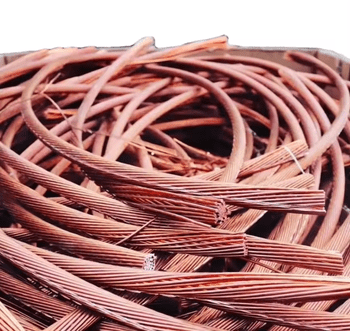
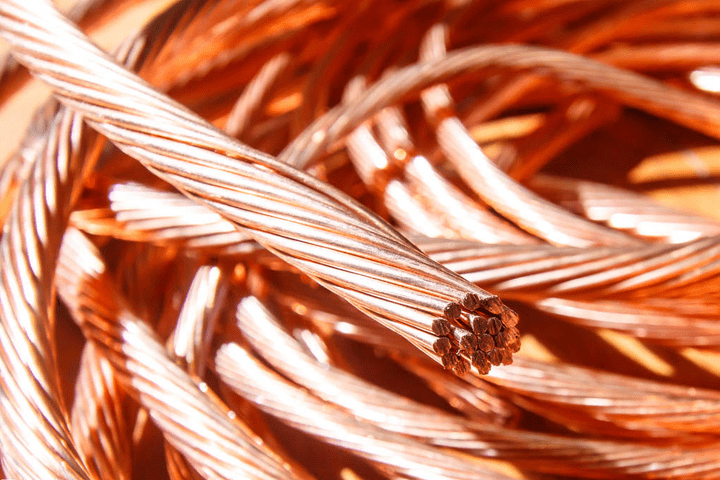
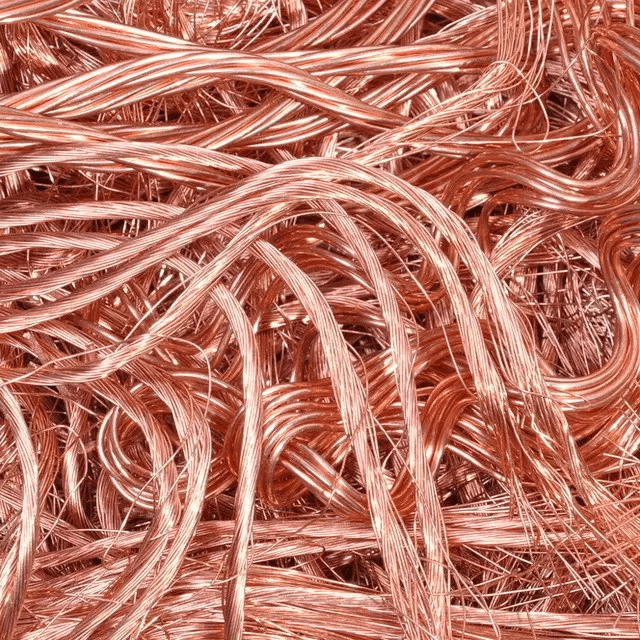
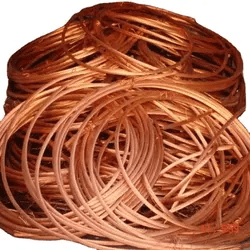
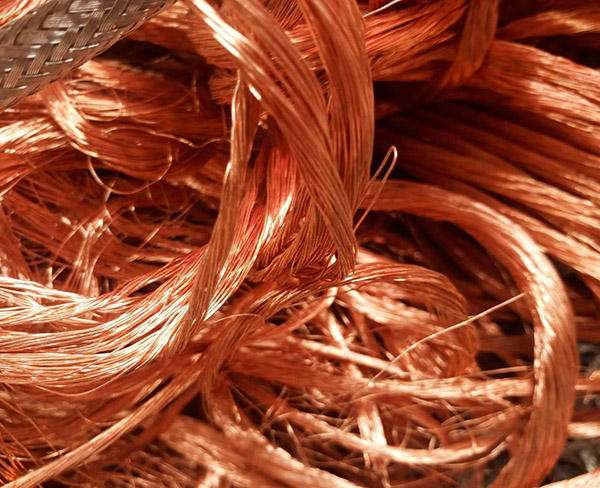
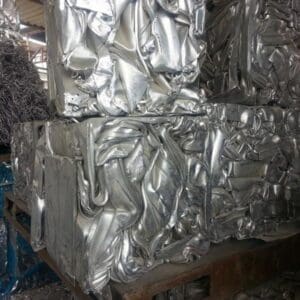

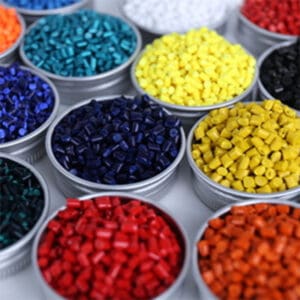
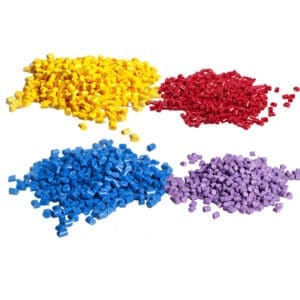


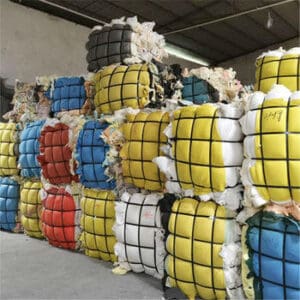
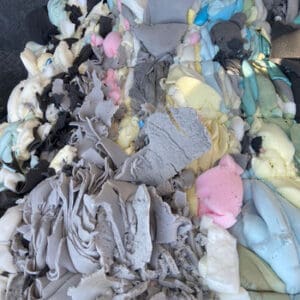


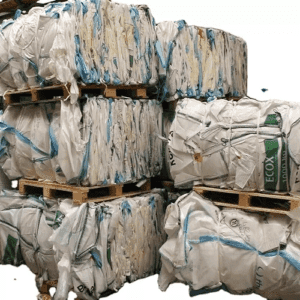
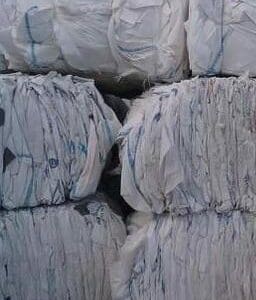




Reviews
There are no reviews yet.